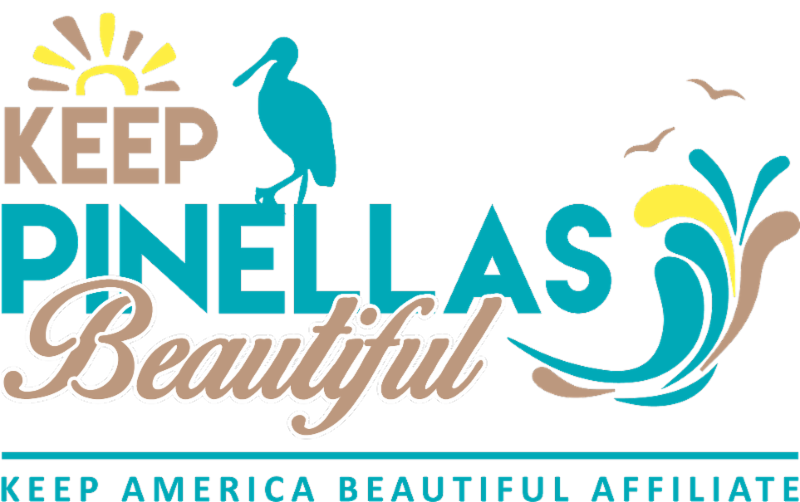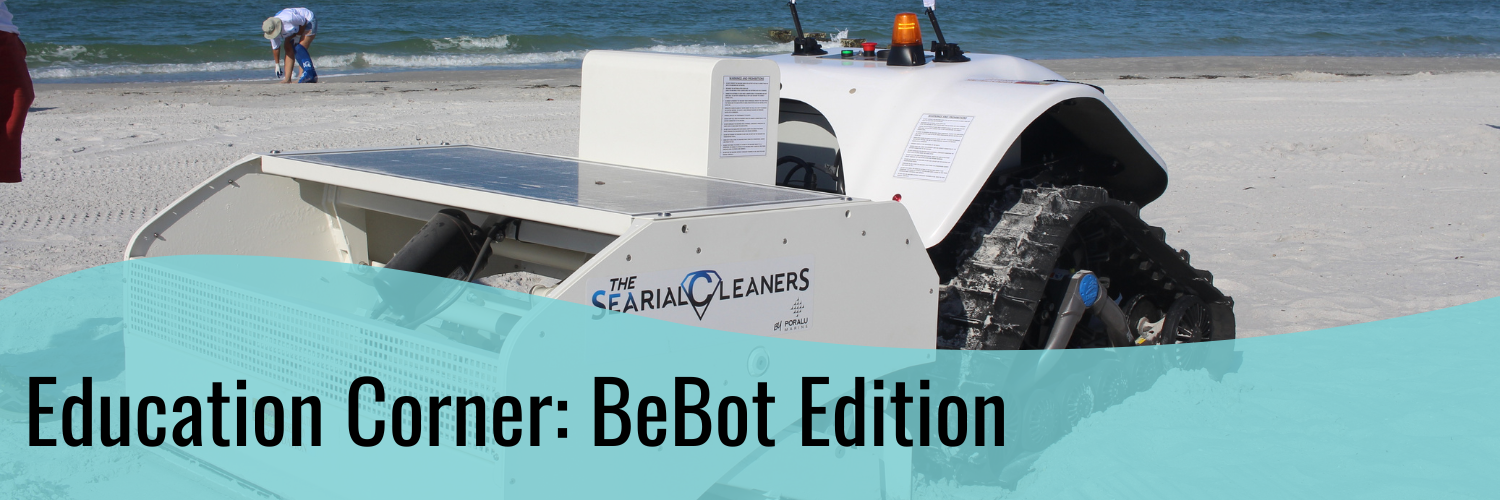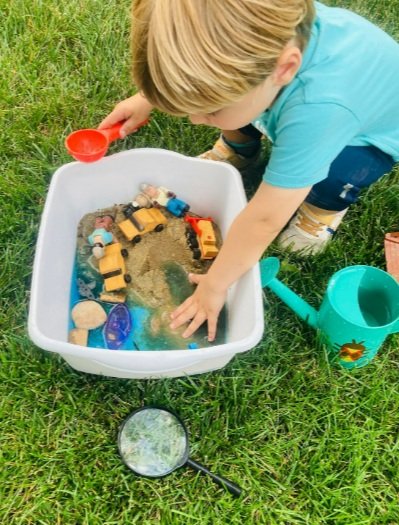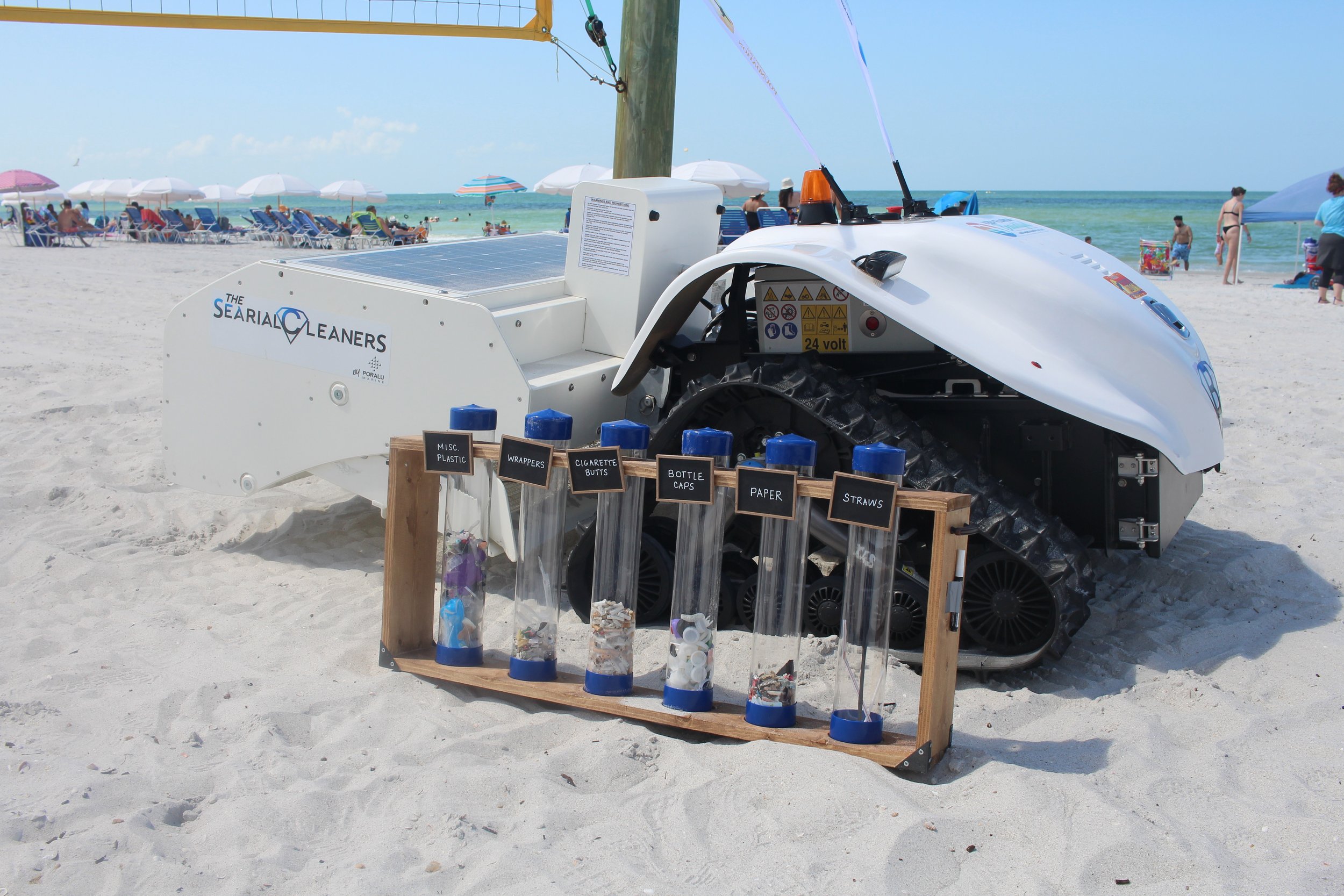Education Corner: BeBot Edition
Meet BeBot. In this edition of Education Corner, we will dig into learning more about what a BeBot is and provide various activities to conduct with your children at home.
What is a BeBot?
The BeBot is a mechanical beach cleaning machine that collects discarded small debris at the sand’s surface level under the remote control of trained staff. It does not require fuel; it runs on a mix of solar and battery power. The eco-friendly companion removes litter as small as 1cm2 like fragmented plastics and cigarette butts that might otherwise go unnoticed. Plastic marine debris destroys marine habitats, injures wildlife, affects human health and safety, and harms our economy. Over time, plastic breaks up into smaller pieces called microplastics which have a devastating impact on the environment.
This new technology is a unique way to captivate beachgoers’ attention for an opportunity to educate them on litter prevention and waste reduction in honor of Plastic Free July. Donated to Keep Florida Beautiful by Surfing’s Evolution and Preservation Foundation, a charitable organization that maintains healthy Florida beaches, the BeBot serves as a teaching tool to work alongside cleanup volunteers. The BeBot’s purpose is not to replace volunteers but to visualize what debris is left behind on the beach. Thanks to Seagram’s Escapes investment in local beaches, the BeBot will be touring fourteen beaches in Pinellas County. If you visit one of our local beaches in July, you may notice this small golf cart sized robot respectfully sifting in the sand, searching for tiny debris.
Want to get involved?
There will be many opportunities throughout the month of July to witness the BeBot in action. The BeBot will be visiting Clearwater Beach, Dunedin, Gandy Beach, Indian Shores, Madeira Beach, North Redington Beach, St. Petersburg, St. Pete Beach, Tarpon Springs, Tierra Verde and Treasure Island. Please visit our Upcoming Events to register for a cleanup near you!
Activities:
Activity for Preschool Age: Sifting in Sand
Goal: Children will have the opportunity for pretend play by digging and sifting through sand. Talk about what lives on the beach and the importance of cleaning up the beach.
Supplies:
Sand
Large Container to put sand inside
Sifters
Shovels
Various Toy People and Animals
Pieces of litter and plastic
Cardboard Trash Can and Recycling Can
Optional: water
Activity for Elementary Age
Goal: Families will observe how marine debris moves and even breaks down on the coastline. In this activity, children will perform experiments to examine whether trash can float, blow around, or wash away. Families can discuss the effects of these characteristics on the presence of marine debris in the environment.
Supplies:
Copy of the recording sheet handout
Several pieces of plastic, rubber, metal, paper, wood, and food trash
A bucket filled with water
One fan
A large shallow container (such as a large dishpan)
One watering can
Directions:
Hand out the recording sheet.
Fill the bucket with water. Have the child put items one by one in the bucket of water to determine which items float and which do not. Observe and record on the recording sheet.
Set up the fan at one end of the table. Place each trash item one by one in front of the fan to observe if it gets blown around. Observe and record on the recording sheet.
Fill the large shallow container or a wading pool with water and place it in front of the fan. One at a time, put each item in the container and turn the fan on. Observe and record on the recording sheet.
Fill the sprinkling can with water. Take the sprinkling can and the trash pieces outdoors, and find a slightly sloped, smooth area (a paved surface on a slight hill would work well). Place the trash pieces on the sloped area, and sprinkle water on them one at a time. (Note: this part of the experiment also can be conducted indoors by elevating one end of a board and placing the lower end in a sink, large container or wading pool. Place the trash pieces on the elevated end of the board, and sprinkle water down the board.) Observe and record on the recording sheet.
Questions to ask your child:
1. Which items float? Which do not?
2. What will happen to buoyant items when they get into the ocean? What could be some of the problems with buoyant marine debris?
3. What blows trash around in the environment?
4. Which items are easily blown around in the water?
5. What element in nature acts like sprinkled water?
6. Which items are easily moved by the sprinkled water?
Recording Sheet :
Resource and Adapted: Adapted from: Universality of South Florida. "Lesson 2: Trash Traits".
Activity for Middle to High School Age:
Goal: Create a persuasive Public Service Announcement (PSA) about marine debris as they have seen and promote a possible change in actions that would mitigate the current culture of single use disposal and pollution on Pinellas County coastline. With parent’s permission, have students share their PSA with Keep Pinellas Beautiful.
Supplies:
• Printer or poster paper
• Markers
• Printed photos of plastic pollution
Directions:
As a family, research PSA and advertisements on TV, printed ads, billboards, and radio. Discuss the goals and marketing objectives of various campaigns.
Research together marine debris, microplastics and beach cleanups statistics. These data points can help support your PSA.
Create a skit or poster that educates and engages the public about marine debris and the importance of cleaning up to ensure our environment is protected for many generations to come.
Questions to Ask Your Child:
Why is pollution harmful to the environment? What does it do to animals, to water, and to us?
What are ways to make people change their actions? Discuss if students have ever seen advertisements or PSAs on television that have been persuasive.
What makes a good PSA?
How have you or your families helped to stop plastic pollution? Discuss things that anyone can easily implement in their life to prevent pollution.
Extra Bonus:
1. With parent’s permission, place their poster PSAs around their school or their community to raise awareness.
2. With parent’s permission, create a short film showing how to complete their solution to pollution and how easy it is to do. Spread the word! Share the film with your local TV station or morning show to broadcast it even further.
Resource: Avallon, E. (2014). "An Educator's Guide to Marine Debris" NOAA.
We hope to see you at a BeBot Beach Tour Event!






